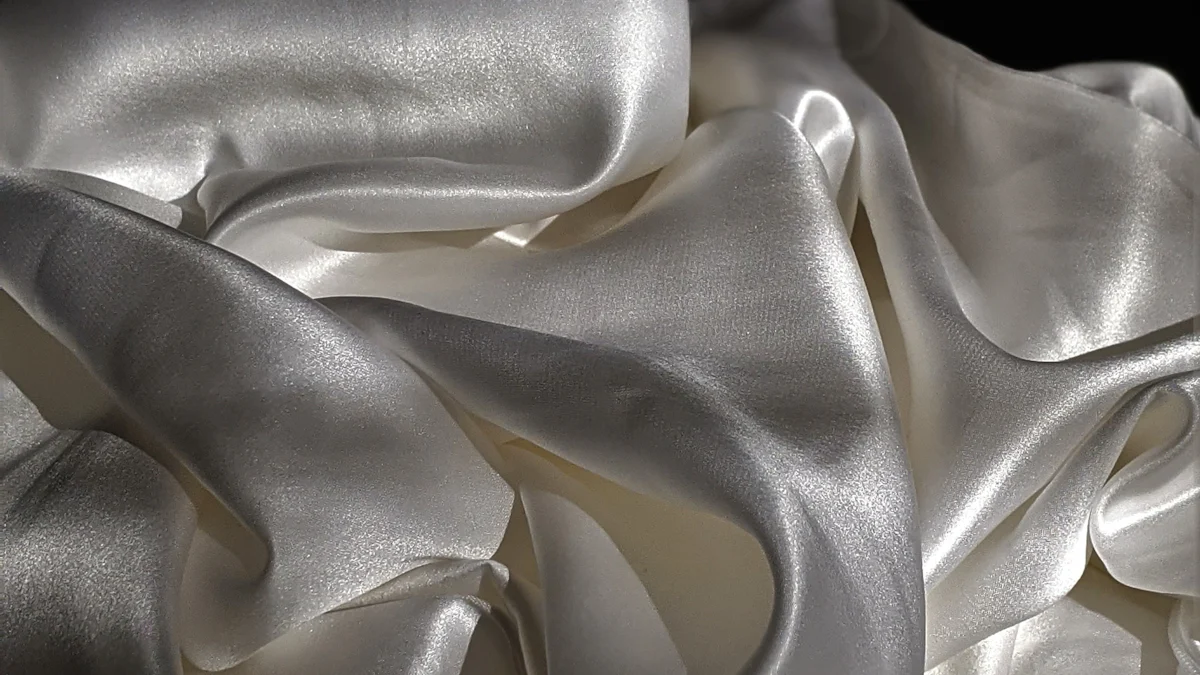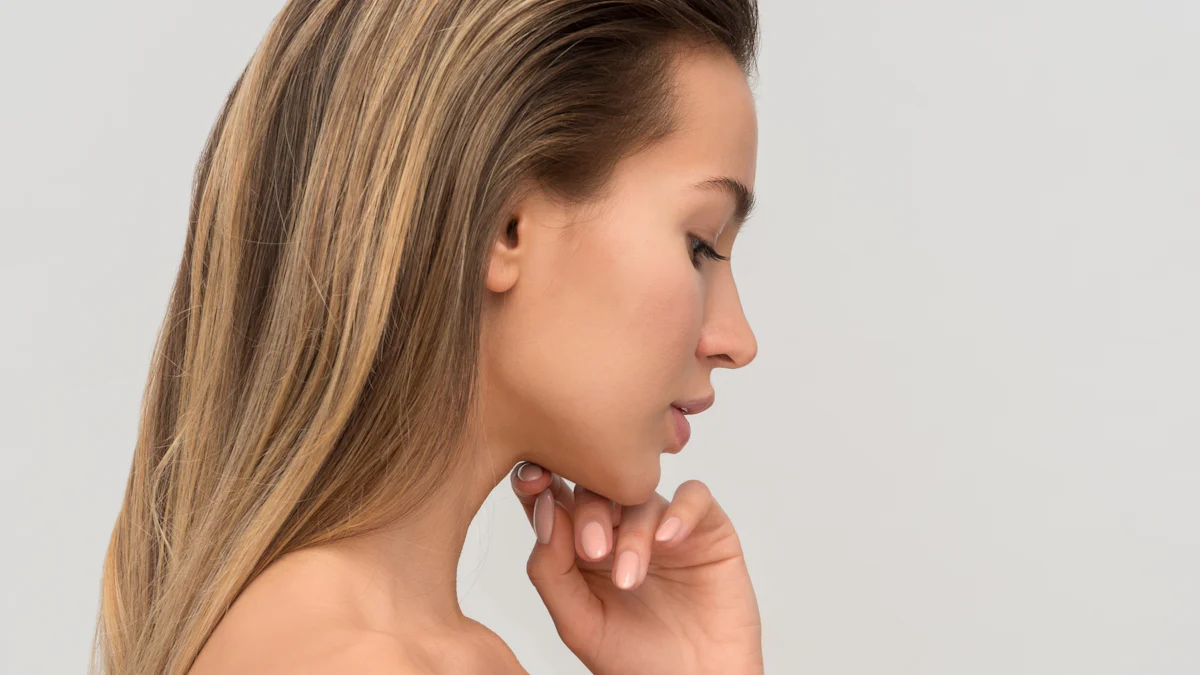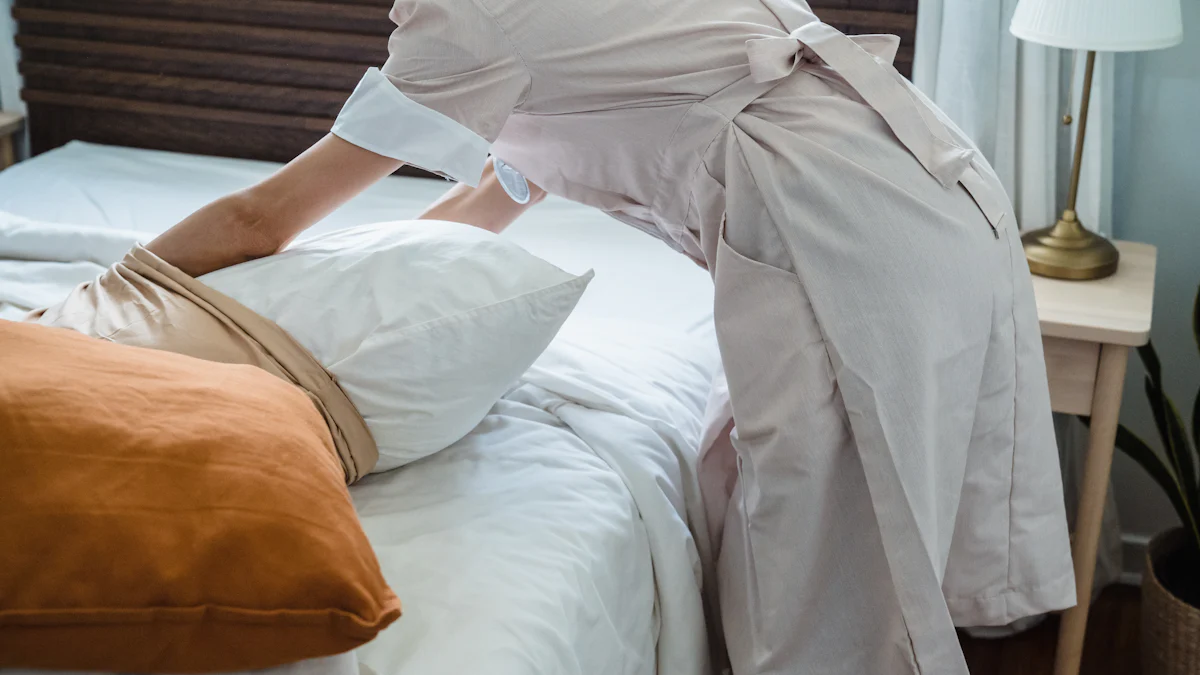
Greasy hair presents a common issue for many individuals. Excess oil production by the scalp’s sebaceous glands causes hair to appear oily and dirty. Various factors contribute to this problem, including hormonal imbalances, stress, and metabolic disturbances. Silk pillowcases offer potential benefits in managing greasy hair. These pillowcases reduce friction, absorb excess oil, and help maintain the natural balance of hair oils. Understanding how a silk pillowcase can aid in controlling greasy hair is essential for those seeking effective solutions.
Understanding Greasy Hair
Causes of Greasy Hair
Sebum Production
Sebum production plays a significant role in greasy hair. Sebaceous glands in the scalp produce sebum, an oily substance that moisturizes the skin and hair. Overactive sebaceous glands can lead to excess oil, resulting in greasy hair. Studies indicate that some sebaceous glands produce an excess of oil, causing oily skin and greasy hair.
Hair Type and Texture
Hair type and texture also impact the greasiness of hair. Fine hair tends to get greasy faster because it has more surface area for oil to cover. Curly or coarse hair may appear less greasy because the oil takes longer to travel down the hair shaft. Each hair type responds differently to oil production.
Environmental Factors
Environmental factors contribute to greasy hair as well. Humidity and pollution can exacerbate oil production. High humidity levels cause the scalp to sweat more, leading to increased oiliness. Pollution can clog pores and irritate the scalp, prompting more oil production. These environmental conditions affect the scalp’s balance.
Common Solutions and Their Limitations
Frequent Washing
Frequent washing is a common solution for greasy hair. Washing hair daily can strip the scalp of natural oils, causing sebaceous glands to produce even more oil to compensate. This creates a cycle of over-washing and overproduction of oil. Frequent washing may not provide a long-term solution.
Use of Dry Shampoos
Dry shampoos offer a quick fix for greasy hair. These products absorb excess oil and add volume to the hair. However, dry shampoos can build up on the scalp, leading to clogged pores and potential irritation. Overuse of dry shampoos may not address the root cause of greasy hair.
Hair Care Products
Various hair care products claim to combat greasy hair. Shampoos and conditioners formulated for oily hair can help manage oil production. However, some products contain harsh chemicals that strip the scalp of natural oils, leading to increased oil production. Choosing the right products requires careful consideration.
“Stress can cause your sebaceous glands to produce more oil, which leads to chronically greasy strands.” – Scientific Research Findings
Understanding the causes and limitations of common solutions provides a foundation for exploring alternative methods, such as using silk pillowcases, to manage greasy hair effectively.
Benefits of Silk Pillowcases

Reduced Friction
Silk pillowcases reduce friction between hair and the pillow. This reduction prevents tangling and breakages. Hair glides smoothly over the surface, minimizing damage. Cotton pillowcases, on the other hand, create more friction. This friction leads to hair snagging and becoming damaged.
Comparison with Cotton Pillowcases
Silk pillowcases offer a smoother surface compared to cotton pillowcases. Cotton fibers create resistance, causing hair to tangle and break. Silk’s smooth texture allows hair to move freely. This movement reduces the risk of split ends and frizz.
Impact on Hair Health
Using a silk pillowcase promotes healthier hair. The reduced friction helps maintain the integrity of hair strands. Hair remains less prone to damage and breakage. This preservation of hair health leads to shinier and more manageable hair.
Better Moisture Retention
Silk pillowcases excel in retaining moisture. Silk’s natural properties help keep hair hydrated. Unlike cotton, silk does not absorb natural oils from the hair. This retention of moisture benefits both the scalp and hair.
Silk’s Natural Properties
Silk contains natural proteins and amino acids. These elements contribute to its moisture-retaining abilities. Silk’s non-absorbent nature ensures that hair stays hydrated. This hydration prevents dryness and brittleness.
Effects on Scalp and Hair
A silk pillowcase supports a healthy scalp. The scalp retains its natural oils, preventing overproduction of sebum. Hair remains moisturized, reducing the likelihood of greasy hair. This balance leads to healthier and less oily hair.
Hypoallergenic Properties
Silk pillowcases possess hypoallergenic properties. These properties benefit individuals with sensitive scalps. Silk’s smooth surface minimizes irritation and discomfort.
Benefits for Sensitive Scalps
Sensitive scalps react well to silk pillowcases. The gentle texture reduces the risk of allergic reactions. Individuals with scalp conditions find relief using silk. This comfort enhances overall hair health.
Prevention of Irritation
Silk pillowcases prevent irritation caused by rough fabrics. Cotton pillowcases can cause friction and irritation. Silk’s smoothness provides a soothing effect. This prevention of irritation promotes a healthier scalp environment.
Oil Regulation
Absorption of Excess Oil
Silk pillowcases play a crucial role in managing greasy hair by absorbing excess oil. The natural moisture-wicking properties of silk help to draw away oil and sweat from the scalp. This absorption prevents oil build-up, which often leads to greasy hair. Unlike cotton pillowcases, which tend to absorb skin’s oil, silk pillowcases maintain a balanced oil level on the scalp. This balance helps in reducing the overproduction of sebum, which is a common cause of greasy hair.
Distribution of Hair Oil
Silk pillowcases also aid in the even distribution of hair oil. The smooth surface of silk allows hair to glide effortlessly, ensuring that natural oils are spread evenly along the hair shaft. This distribution prevents the concentration of oil at the roots, which often results in greasy hair. By maintaining an even spread of oil, silk pillowcases help in keeping hair healthier and less oily. The reduced friction provided by silk further supports this process, as it minimizes tangling and breakage, allowing for better oil regulation.
How to Choose the Right Silk Pillowcase

Quality of Silk
Mulberry Silk vs. Other Types
Mulberry silk stands out as the highest quality silk available. This type of silk comes from silkworms that feed exclusively on mulberry leaves. The resulting fibers are smoother, stronger, and more uniform than other types of silk. Mulberry silk pillowcases offer unparalleled softness and durability. Other types of silk, such as Tussah or Eri, may not provide the same benefits. These alternatives often have a rougher texture and less consistent quality.
Momme Weight
Momme weight measures the density of silk fabric. Higher momme weight indicates thicker and more durable silk. For silk pillowcases, a momme weight between 19 and 25 is ideal. This range ensures a balance between softness and longevity. Lower momme weights may result in thinner, less durable pillowcases. Higher momme weights can feel too heavy and less breathable. Choosing the right momme weight enhances the overall experience of using a silk pillowcase.
Care and Maintenance
Washing Instructions
Proper care extends the life of silk pillowcases. Hand washing with mild detergent in cold water is recommended. Avoid harsh chemicals and bleach, as they can damage the delicate fibers. If machine washing is necessary, use a gentle cycle and place the pillowcase in a mesh laundry bag. Air drying is preferable to maintain the fabric’s integrity. Direct sunlight can cause fading, so dry the pillowcase in a shaded area.
Longevity Tips
Maintaining silk pillowcases involves a few simple practices. Rotate between multiple pillowcases to reduce wear and tear. Store silk pillowcases in a cool, dry place to prevent mold and mildew. Avoid using fabric softeners, as they can coat the fibers and reduce silk’s natural benefits. Regularly inspect for signs of wear and address any issues promptly. Following these tips ensures that silk pillowcases remain in excellent condition for years.
Silk pillowcases offer numerous benefits for managing greasy hair. These pillowcases reduce friction, absorb excess oil, and help maintain the natural balance of hair oils. Silk’s hypoallergenic properties also prevent irritation and support sensitive scalps.
Consider switching to silk pillowcases for healthier, less oily hair. Look for options made from 100% pure mulberry silk with a momme weight between 19 and 25 for the best quality.
For more information, explore resources on hair care and the advantages of using silk products.
Post time: Jul-08-2024
